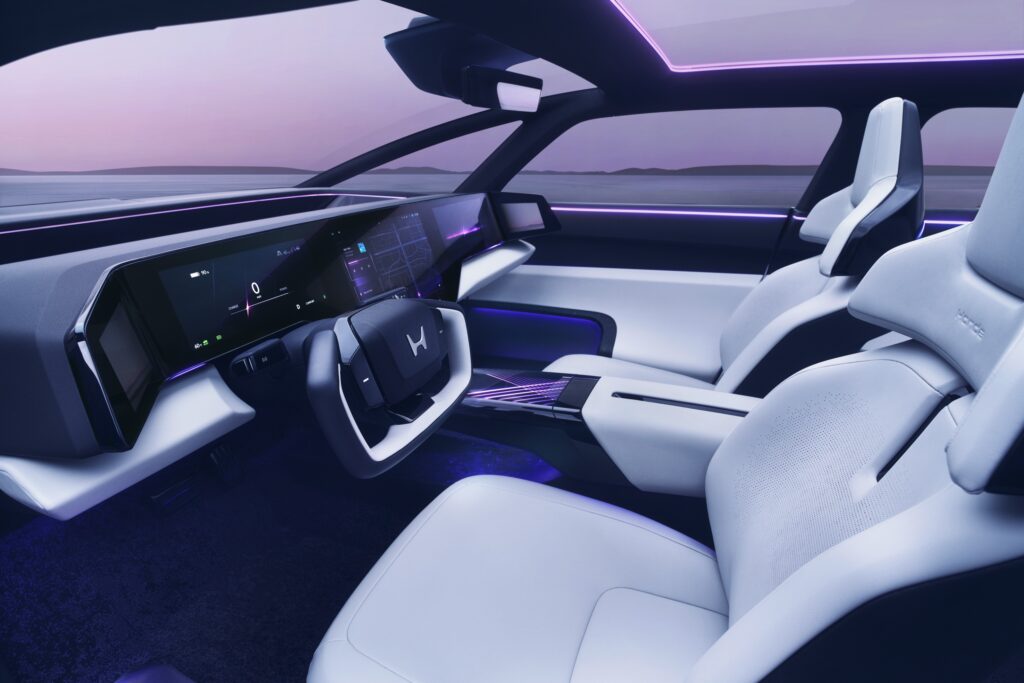During a roundtable following Honda’s CES press event, Mahito Shikama, VP and head of Honda’s software-defined vehicle business development unit, said the company would move to Level 3 in stages, starting with highway driving and moving to local roads as the system gets smarter. While Shikama declined to give specific details of speed ranges (the Legend currently operates at Level 3 autonomy in relatively slow stop-and-go traffic on specific roads in Japan), he said the biggest challenge will be Level 3 on local roads.
The Zero Saloon’s interior.
The Zero SUV looks quite spacious inside.
Honda
In addition to the work on AD, Honda is also planning to build a new electronic architecture for the Zero vehicles, which, along with Asimo OS, will handle suspension, ride feel, energy management, and more. Honda has formalized an agreement with Japanese semiconductor business Renesas, a company that helped it achieve its Level 3 autonomy on the Legend in Japan.
According to Vivek Banh, the SVP and general manager of high-performance computing at Renesas, the new SoC (system on a chip) that will be jointly developed with Honda will “target the world’s top-class 2000 TOPS level AI processing performance and 20 TOPS/W (tera operations per second, per Watt) power efficiency.”
According to Frey, this will help Honda create an EV that “changes the value of EVs as a space for people.” The system will determine emotion, intention, and further personalization—hence the “partner” terminology that peppered the somewhat creepy video Honda showed at the unveiling.
Toshiro Akiwa, director and EVP at Honda, told a group of gathered journalists that the idea of the vehicle as “partner” originated with the customer at the heart of the solution. “Utilizing the capability of the vehicle to actualize what the customer wants to do with the software we will create is what we showed off today,” he said through a translator.
















+ There are no comments
Add yours